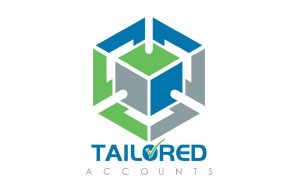
One of our clients recently asked us why we spend two to three hours to prepare one set of business activity statement (BAS) each time, when we can easily export BAS from MYOB. He believed that we should not be ‘double-handling’ as this wasn’t cost-effective. Since I started Tailored Accounts in 2009, I have always insisted on ‘double-handling’ because we always come across errors each time we review our clients’ BASs. Most of the time, the mistakes in their lodgement were in favour of the Australian Taxation Office (ATO). Correspondingly, in my response to the client, I explained that we didn’t want him to lose his hard-earned money over BAS errors.
Let me share with you the detailed steps and measures that we take to prepare our clients’ BASs:
1.Check to ensure all bank, credit card, overdraft, loan, and petty cash accounts are reconciled with the original bank statements at the end of every BAS quarter.
2. Print the monthly profit and loss (P&L) report for the BAS quarter and check for abnormalities in income or expenditure in the three months. Also, compare this quarter’s P&L report with the P&L report from the previous quarter in the same financial year, as well as the P&L report from the same quarter but previous financial year to detect any unexpected transactions.
3. Print out the balance sheet as at the end of the BAS quarter. Note the balances for the wage and salary, payroll, payable, Super expense and payable, and PAYG and GST accounts, and investigate any abnormalities.
4. Proceed to perform other reconciliations by cross-checking payslips and accounts payable, accounts receivable, and payroll in the general ledger.
5. Generate the general ledger exceptions report to review any abnormal transactions. This report will indicate any differences in the GST codes for the same types of purchases or sales by comparing the current transactions with previous transactions.
6. Review capital purchase transactions in the quarter, paying special attention to transactions related to equipment finance, lease, and rental.
7. If you are using Xero, you should not lodge your BAS until you have generated the GST reconciliation report. On the last day of the BAS quarter, ensure that your GST payable is reconciled with the GST amount in the balance sheet before you lodge your BAS.
8. Print the BAS and compare with it with last quarter’s BAS and the BAS of the same quarter in the previous year, and ensure that your GST, PAYG, sales, and purchases are consistent across all three BASs.
9. Lodge and pay your BAS on time to avoid penalties, and record the BAS payment in your accounting system.
If you encounter issues when completing your BAS, why not drop by the nearest Tailored Accounts office in Canberra, Goulburn, Sydney, or Brisbane? Other than bringing our expertise closer to you as we expand beyond Canberra, Tailored Accounts gives you peace of mind by managing your business’ finances.


Harry Hoang is Tailored Accounts Executive Director
M3 Building, Level 1, Suite 127, 24 Lonsdale Street, Braddon ACT 2612 Australia
T: 02 6169 5196 | M: 0434 196 607 E: [email protected] | www.tailoredaccounts.com.au
